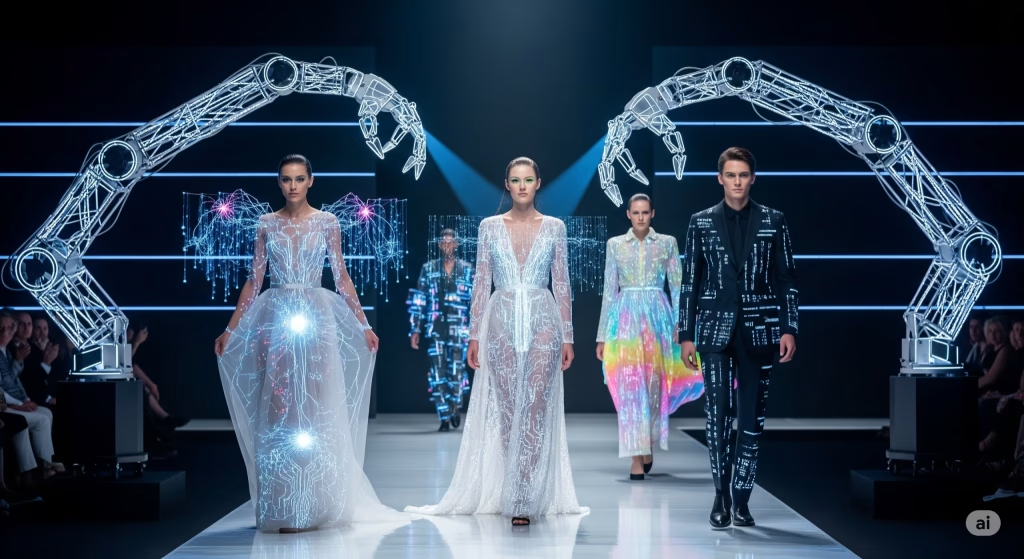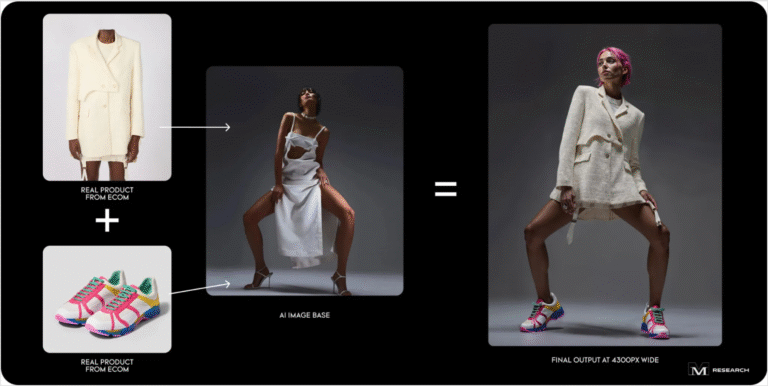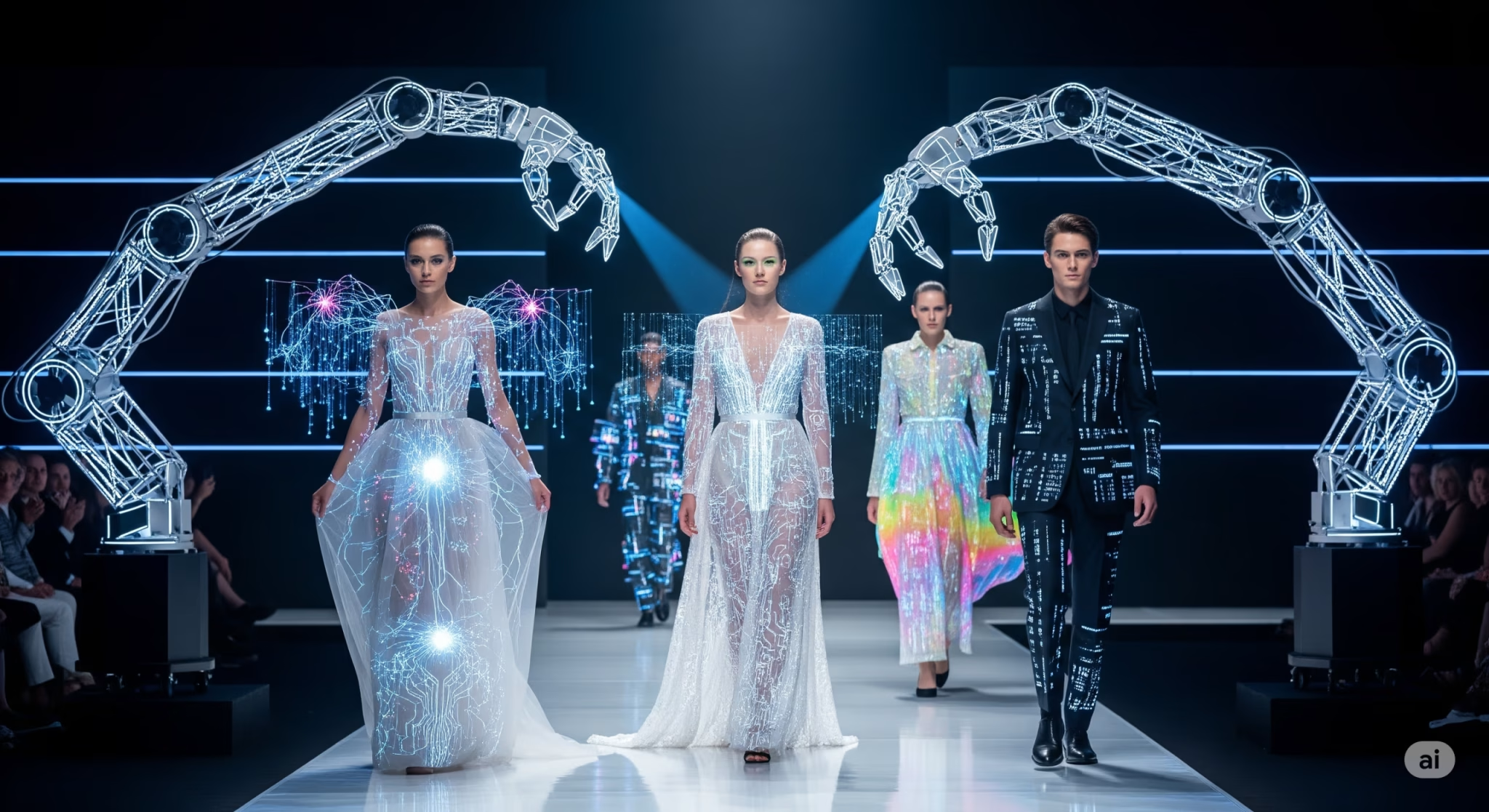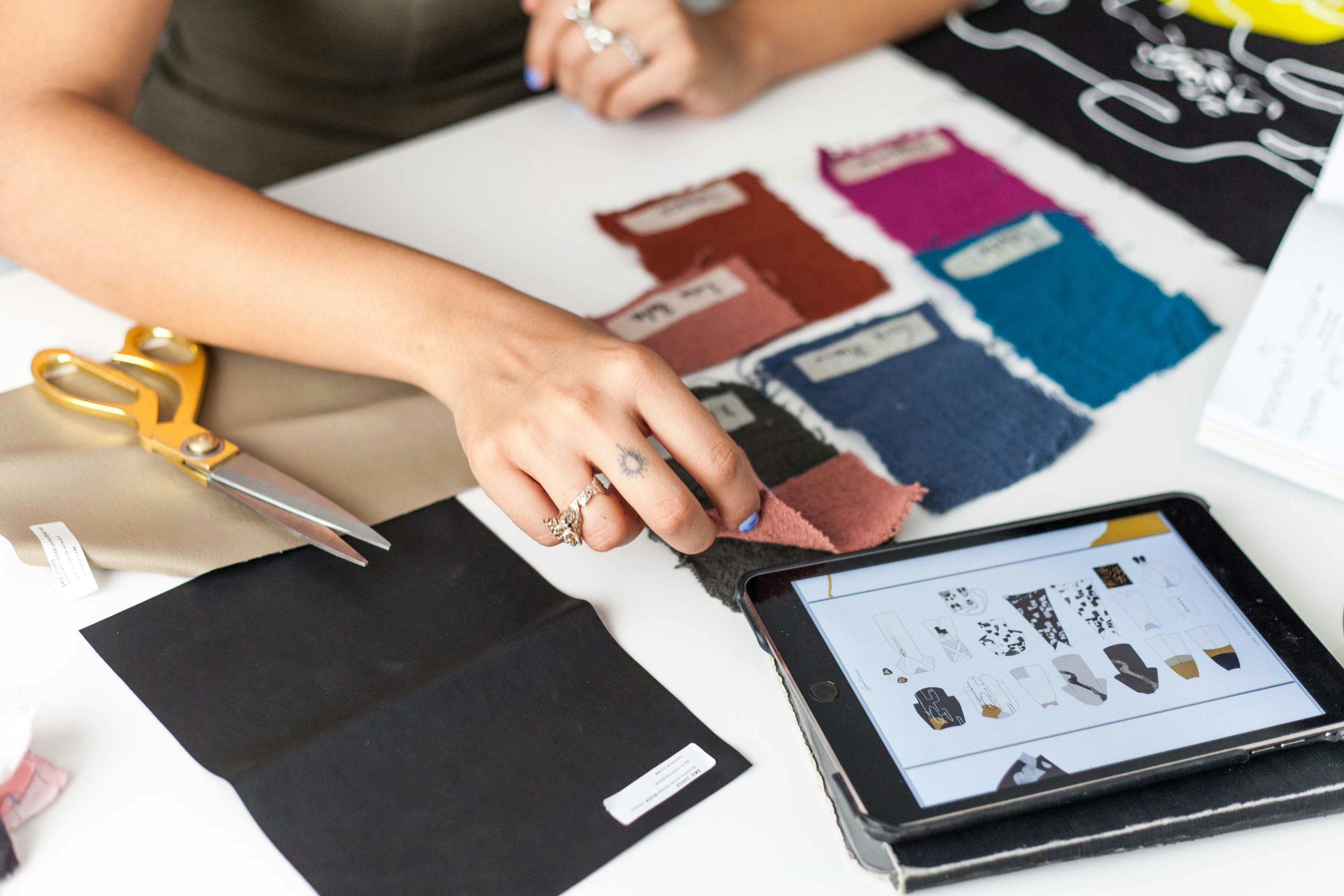How AI is revolutionizing trend analysis in fashion
October 6, 2025
Discover how artificial intelligence can be used to anticipate trends, refine collections, and stay ahead of the competition.

A revolution on the horizon
In an industry as dynamic and competitive as fashion, spotting trends at the right time can mean the difference between a successful launch and unsold inventory. However, small businesses and new designers often lack the time, budget, or resources to monitor trends effectively. Artificial intelligence (AI) is radically changing the game. By automating the analysis of visual, behavioral, and social data, it gives emerging businesses access to strategic information that was once reserved for large fashion houses.
What if you could anticipate the next bestsellers before they even hit the stores? That’s exactly what AI makes possible today. Here’s how.

Why understanding trends is vital for an emerging brand
The pace of fashion has accelerated dramatically. Between fast fashion, viral micro-trends on TikTok, and limited drops, brands need to react quickly. Missing a trend or releasing a collection that is out of step with current desires can be fatal. Understanding what consumers want today, and especially what they will want tomorrow, has become a key competitive advantage.
A collection strategy that is well aligned with current trends facilitates:
- Product positioning
- Visual consistency of the brand
- Sales conversion
- Community engagement
To learn more about the risks of a poorly aligned launch, read our article on The Most Common Mistakes When Launching a Fashion Brand and How to Avoid Them.
How AI is changing trend forecasting
In the past, designers and founders drew inspiration from magazines, street style, fashion weeks, and trade shows. This manual, time-consuming, and intuitive process was often reserved for major brands. Today, AI makes it possible to analyze millions of visual and textual data points in real time:
- Image analysis on Instagram, TikTok, Pinterest, e-shops, etc.
- Detection of visual patterns: recurring shapes, colors, patterns, and textures.
- Tracking of hashtags and search trends.
- Behavioral analysis: what people like, share, and comment on.
- Predictions about the rise or fall of certain aesthetics.
Example: an AI tool can identify that sage green, platform boots, and coordinated outfits are making a breakthrough on the TikTok accounts of Seoul-based influencers. An agile brand can then incorporate these codes into its next capsule collection.
This data-driven approach avoids misguided intuitions and enables fact-based decision-making. It transforms creative instinct into a guided strategy.
Accessible tools for emerging brands:
To get started with AI monitoring, there are several solutions available depending on your budget and needs.
– To get started without investment, two free tools are essential: Pinterest Trends excels at identifying visual trends by keyword and allows you to create mood boards inspired by real data. Google Trends, meanwhile, remains essential for analyzing search volumes and validating your creative insights.
– Heuritech is the benchmark for visual trend analysis on social media. This advanced and highly accurate solution works on a quote basis, making it more accessible to organizations with substantial budgets.
– For D2C brands with intermediate resources, Trendalytics offers an approach combining retail and social search data for around $250 per month. This platform offers an excellent compromise between advanced features and affordability.
– Edited stands out for its in-depth analysis of e-commerce and competitive pricing. Although premium, this tool provides market data that is particularly useful for product positioning and pricing strategy.
Recently published :
Follow us !
Follow us to explore more stories, insights, and daily inspiration we share
Ready to Turn Your Idea into Reality?
If you’ve got an idea that won’t let you rest, we’re ready to help. Contact us on WhatsApp, and let’s talk about how we can bring your vision to life with our full range of services.
Integrating This Data Into Your Creative Process
Enhanced Mood Boards: Feed your inspiration with visuals identified through AI. Rather than manually compiling inspirational images, visual analysis tools automatically suggest emerging palettes, textures, and silhouettes. You can create mood boards powered by thousands of references analyzed in real-time, ensuring inspiration that’s both fresh and data-driven.
Color and Cut Choices: Adapt your decisions to concrete signals rather than intuition alone. For example, if analysis reveals a 300% increase in searches for “lilac” on Pinterest, or a massive comeback of cargo pants on TikTok, you can integrate these elements into your next creations with confidence reinforced by data.
Optimal Collection Timing: Launch the right pieces at the right time thanks to popularity peak predictions. AI can tell you that a trend will explode in 2-3 months, allowing you to stay ahead of your competitors rather than follow the movement.
Smart Differentiation: Identify an emerging trend and personalize it according to your brand DNA. The goal isn’t to reproduce identically, but to capture a trend’s essence and reinterpret it through your unique creative lens.
The Essential Balance: AI and Creative Identity
Remember, following trends doesn’t mean blindly copying. Your brand DNA remains the absolute priority. AI should serve as strategic support to illuminate your creative decisions, not replace your artistic vision.
This hybrid approach guarantees several advantages: it reduces commercial failure risks while preserving creative authenticity, it accelerates the trend research process without sacrificing originality, and it enables more informed decision-making based on real data rather than assumptions. The ultimate goal remains creating pieces that bear your signature while resonating with the zeitgeist.

How AI is redefining industry standards: the example of MaisonMeta

The emergence of MaisonMeta, the first generative AI agency dedicated to fashion, perfectly illustrates the sector’s transformation. Founded by Cyril Foiret and based between New York, Paris, and London, this company made history by creating the first official AI campaign with Moncler Genius in late 2022.
MaisonMeta doesn’t just offer tools: the agency supports brands in their creative transformation by combining fashion expertise with technological mastery. It helps clients create advertising campaigns, lookbooks, and visual content entirely generated by AI, while preserving brand identity. Their role goes beyond technical services to become a true strategic partner in adopting creative AI.
What this phenomenon reveals:
Generative AI no longer just optimizes existing processes—it creates new professions and new creative approaches. MaisonMeta organized the world’s first AI Fashion Week, signaling the emergence of an entirely new creative ecosystem. This revolution poses a fundamental question: how can traditional and emerging brands adapt to an environment where AI-assisted creation becomes the norm?
For emerging brands, this example highlights the importance of integrating AI thinking into their DNA now, not as a simple tool, but as a new creative language to master.
Supply Chain Transformation: The Mercer.design Case
The evolution from CALA to Mercer.design illustrates a fundamental trend: vertical integration of fashion processes through AI. This platform revolutionizes the traditional approach by unifying design, development, production, and logistics in a completely reimagined ecosystem.
Concretely, Mercer.design allows creators to go from a simple idea or sketch to the finished product, including tech pack creation, supplier sourcing, prototyping, and order management. AI intervenes at every step: generating design variations, optimizing cuts, predicting production costs, or automatically matching with the right suppliers. Their role is to eliminate traditional friction between creation and production.
Issues and challenges of AI in fashion
The adoption of artificial intelligence raises crucial questions for brands, particularly in the luxury sector where authenticity and artisanal craftsmanship are fundamental values.
The Client Transparency Challenge:
How to communicate about AI usage without harming the authenticity image?
This question divides the sector. On one side, some brands choose total transparency, like Levi’s which publicly announced its partnership with Lalaland.ai to diversify its advertising campaigns. On the other, many houses prefer a discreet approach, using AI internally without making it a marketing argument.
The main risk lies in consumer perception: can AI coexist with the image of authenticity and human creativity? Brands that successfully navigate this transition are those that position AI as a creative amplification tool rather than a replacement. They highlight the collaboration between artificial intelligence and their creative teams, thus preserving the human dimension of their process.
The Delicate Creative Balance
Preserving brand identity while exploiting technological possibilities
Generative AI offers infinite creative possibilities, but this freedom can paradoxically become a trap. Without guardrails, a brand risks losing its visual consistency by exploring all possible directions.
The smartest brands establish strict “creative rules”: defined color palettes, non-negotiable aesthetic codes, brand values to respect. AI then becomes a creative variation tool within a defined framework, not an anarchic idea generator.
Moncler’s example with MaisonMeta perfectly illustrates this balance: the collaboration produced innovative visuals while maintaining the Italian brand’s premium DNA and recognizable aesthetic.
The Limits of Smart Targeting
Using predictive capabilities without falling into over-personalization
AI enables targeting with unparalleled precision, analyzing consumer behavior, preferences, and even emotions. But this capability raises important ethical and practical questions.
First, privacy respect: how far can we go in behavioral analysis without crossing the red line? Regulations like GDPR already impose limits, but technological evolution moves faster than the legal framework.
Next, the “bubble” effect risk: excessive personalization can lock consumers into their past habits, preventing them from discovering new styles. Yet fashion also thrives on surprise and discovery.
Finally, the economic aspect: over-personalization can excessively fragment the offer, making production less profitable and complicating inventory management.
The Emergence of an Ethical Approach
Facing these challenges, a new generation of companies develops “ethical AI” for fashion. These actors propose several guiding principles:
Algorithmic transparency: Explain to consumers how their data is used and give them control over its use.
Augmented, not replacing AI: Position technology as a human talent amplifier rather than a substitute.
Diversity and inclusion: Ensure algorithms don’t reproduce existing biases in the fashion industry, particularly regarding body and cultural representation.
Sustainability: Use AI to reduce waste (more precise sales prediction) and optimize production processes.
Startups like IMKI show it’s possible to reconcile technological innovation with respect for luxury codes, by adopting this ethical approach from the conception of their tools and services.
Conclusion: rethinking strategy in the age of AI
Artificial intelligence doesn’t just optimize existing processes in fashion: it redefines the rules of the game. The examples of MaisonMeta and Mercer.design show that we’re witnessing the emergence of new creative and productive ecosystems.
For emerging brands, the challenge is no longer just adopting AI tools, but fundamentally rethinking their strategic approach. How to create value when technical barriers crumble? How to preserve creative identity in an increasingly automated environment? How to anticipate the expectations of a generation native to digital and AI?
This revolution offers new brands a historic opportunity: being born directly in the AI era, without the weight of traditional habits. Provided they seize the codes of this new epoch now.
Would you like to integrate AI into your creative process or validate your strategic choices with reliable data? Discover our tailored consulting services.
🔗 Related articles to explore:
Ready to Turn Your Idea into Reality?
If you’ve got an idea that won’t let you rest, we’re ready to help. Contact us on WhatsApp, and let’s talk about how we can bring your vision to life with our full range of services.




